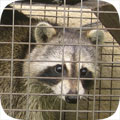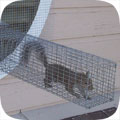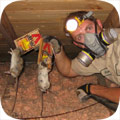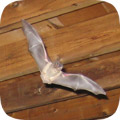- newhaven@wildlifeanimalcontrol.com
Call 24/7 for a free quote:
203-584-9038
New Haven Wildlife Animal Control
Professional Wildlife Removal Company Servicing New Haven, CT
If you have a problem with wildlife in your New Haven home, your best option is to hire a company that specializes in Connecticut wildlife removal only. This is a specialty business, and regular pest control companies do not use the proper techniques to solve animal problems. I have spent many years reviewing Connecticut and New Haven, and I recommend the following:
Wildlife Removal New Haven
Cell Phone: 203-584-9038
NOTE: If you have a dog or cat problem, call New Haven County Animal Services: (203) 946-8110

Wildlife Removal New Haven specializes primarily in removing animals from attics of homes and buildings - this includes squirrels in attics, raccoons, and rats or mice in homes. Connecticut also has a documented problem with
bats in buildings, and Wildlife Removal New Haven is specially trained in bat removal. They also perform general wildlife trapping services, such as the capture and removal of skunks or opossums on the
property. Call 203-584-9038 to discuss your critter problem and schedule a same-day or next-day appointment. Click here to learn more about what prices we charge in 2020.
When hiring a company to solve your wild animal problem, you want these features:
- Specializes in wildlife removal, not pest control
- Fully Connecticut and New Haven County licensed and insured
- Works 7 days per week (critters don't take weekends off)
- Performs full building inspections: enters and inspects attic
- Performs exclusion repairs, with guarantee against animal re-entry
- Offers cleanup of biohazardous wildlife waste
Wildlife Removal New Haven is a full-service New Haven wildlife removal company. This is very different from a regular New Haven pest control company. The pest control companies spray poison to kill insects. This is not at all
similar to wildlife removal. Wildlife Removal New Haven performs a full inspection of the home or property, and determines why the animal(s) are there, and if inside a building, how the animals got inside. All
animals (including rodents) are trapped and removed, or if possible, removed from the building using special exclusion devices. Once the animals are gone, preventative repairs are essential, and
cleanup is sometimes recommended.
 New Haven wildlife trapping - it's not as simple as it may seem. It's illegal in Connecticut to trap without a license. Trap type is very important and there are many different types, bait is somewhat relevant, trap placement
is vital, and there are dozens of small things that are very important to know.
Safety is a concern. Then once the animal is trapped, it must be removed and dealt with in the proper manner according to Connecticut law. We offer New Haven raccoon removal. Read more about how to get rid of raccoons.
New Haven wildlife trapping - it's not as simple as it may seem. It's illegal in Connecticut to trap without a license. Trap type is very important and there are many different types, bait is somewhat relevant, trap placement
is vital, and there are dozens of small things that are very important to know.
Safety is a concern. Then once the animal is trapped, it must be removed and dealt with in the proper manner according to Connecticut law. We offer New Haven raccoon removal. Read more about how to get rid of raccoons.
 Animals in attics - this is our specialty at Wildlife Removal New Haven. Many types of animals like to live in attics. This includes squirrels, raccoons, rats, mice, bats, birds, and even possums. Critters like to go into attics for a safe place to live
and raise their young. Removing animals from attics is very complex work, partly because of the presence of baby animals. If you need New Haven squirrel removal, we can remove all the squirrels from your attic, and seal out any future ones. Read more about how to get rid of squirrels.
Animals in attics - this is our specialty at Wildlife Removal New Haven. Many types of animals like to live in attics. This includes squirrels, raccoons, rats, mice, bats, birds, and even possums. Critters like to go into attics for a safe place to live
and raise their young. Removing animals from attics is very complex work, partly because of the presence of baby animals. If you need New Haven squirrel removal, we can remove all the squirrels from your attic, and seal out any future ones. Read more about how to get rid of squirrels.
 Rodent control must be done in a very specific way. First off, the most important thing is that all the openings that rats and mice can use to enter a house be sealed. Then all the rodents must be physically trapped and removed.
Never, ever use poison! Most New Haven exterminators will just use this lazy poison technique to kill rodents, and it causes more harm than good - dead stinky rats, and it doesn't solve the problem. Call us for correct New Haven rat removal. Read more about how to get rid of rats.
Rodent control must be done in a very specific way. First off, the most important thing is that all the openings that rats and mice can use to enter a house be sealed. Then all the rodents must be physically trapped and removed.
Never, ever use poison! Most New Haven exterminators will just use this lazy poison technique to kill rodents, and it causes more harm than good - dead stinky rats, and it doesn't solve the problem. Call us for correct New Haven rat removal. Read more about how to get rid of rats.
 Bat removal is a highly specialized task. Connecticut is known to have colonizing bats who often live in buildings. Bats love attics. If not removed, the colony can grow to a very large size over the years. The bat droppings are often corrosive and
cause health risks. The same goes for bird droppings on or in buildings. We perform New Haven pigeon removal and bird control. But our specialty is New Haven bat removal. We remove 100% of the bat colony and seal the building so that it's totally bat-proof. Read more about how to get rid of bats.
Bat removal is a highly specialized task. Connecticut is known to have colonizing bats who often live in buildings. Bats love attics. If not removed, the colony can grow to a very large size over the years. The bat droppings are often corrosive and
cause health risks. The same goes for bird droppings on or in buildings. We perform New Haven pigeon removal and bird control. But our specialty is New Haven bat removal. We remove 100% of the bat colony and seal the building so that it's totally bat-proof. Read more about how to get rid of bats.
 If you have animals inside a house, no job is complete without proper exclusion repairs. If you simply hire a New Haven trapper who only removes the critters, then the problem will return. You need to hire a New Haven wildlife control company that identifies 100% of the animal entry points
into your building, and seals them shut with professional repairs. In addition, in many cases animals have left waste or contamination behind, and you'll want a company that can provide professional cleaning services. Wildlife Removal New Haven does both.
If you have animals inside a house, no job is complete without proper exclusion repairs. If you simply hire a New Haven trapper who only removes the critters, then the problem will return. You need to hire a New Haven wildlife control company that identifies 100% of the animal entry points
into your building, and seals them shut with professional repairs. In addition, in many cases animals have left waste or contamination behind, and you'll want a company that can provide professional cleaning services. Wildlife Removal New Haven does both.
The above are just some of the services offered by Wildlife Removal New Haven. We also trap and remove animals that destroy lawns, such as moles, or digging animals. Sometimes animals like opossums will live under buildings, steal pet food, raid garbage cans, etc.
Read about how to get rid of opossums. Skunks commonly live under sheds or decks, and set up a den. We can trap and remove them without them spraying. Read about how to get rid of skunks. Wildlife Removal New Haven
also provides dead animal removal in New Haven. If you need help with any other wildlife conflict, from a fox, beaver, groundhog, or any other critter, we can solve it. We also do New Haven snake removal - most of the snakes in Connecticut are not venomous, but
call us if you want safe removal, or read about how to get rid of snakes in New Haven. And remember, we are a private business, not New Haven County Animal Control Services, so if you have a dog or cat problem, call the County at (203) 946-8110.
New Haven County animal services does not handle any wildlife issues.
Wildlife Removal New Haven: 203-584-9038
New Haven Pricing Info For Year 2020
 Every wildlife removal situation is different, from the species of animals involved, the location of the animal inside a house or outside, the extent of repairs or cleanup, etc. It's impossible to give one-size-fits-all prices. Examples MIGHT include:
Every wildlife removal situation is different, from the species of animals involved, the location of the animal inside a house or outside, the extent of repairs or cleanup, etc. It's impossible to give one-size-fits-all prices. Examples MIGHT include:
Small Job: For example, a one-stop job to remove an animal in the yard: $100 on up
Medium Job: For example, getting critters out of your house with minor repairs: $300 on up
Large Job: For example, a project involving many service trips and complex work: $500 on up
Give us a phone call now and tell us about your wildlife issue and we will be able to give you a price estimate over the phone. If you're cool with it, we can schedule a same-day or next-day appointment if you like. Our prices are fair, and a good value because we do the job right, the first time.
New Haven Wildlife Tip #1:
What kind of damage can a possum do? - The possum is a weird and wonderful creature with a very interesting history and some rather bizarre biological facts. On top of this however, it also has the uncanny ability to make pretty much any place its home, making it one of the fastest growing problems in the United States. This animal will live practically anywhere, from the attic of your home, to the basement, the walls, the porch and under the patios, and even in outbuildings such as external toilets, garages and sheds. It would be safe to assume that this creature, once it has inhabited your home or land, is going to be a real pain in the backside. You need to first have a look at how big the possum is - around the same size as your run of the mill house cat. Now multiply the problems that you would find with a housecat by tend and you have some idea of the destruction that can be caused. The possum will have no problems tipping over your garbage can while trying to have a good rummage through the contents. It also has some pretty mean looking teeth and incredibly sharp claws which means your screen doors are going to meet their match, as well as the dry wall in your home, electrical wiring, personal possessions and much more. Of course, it would be wrong to talk about the damage that a possum can do without first taking into consideration the diseases that this animal can carry, as well as the fact that it is often a carrier of fleas, ticks and mites. Also, on top of all of these things, your possum is likely to die in your home which is going to require a pretty heft clean up job, in some cases as far as ripping out insulation and hacking down your drywall!
New Haven Wildlife Tip #2:
Palm rat - The true palm rat is native to India and is not a natural resident of North America. Roof rats are sometimes called palm rats, though they are not really the same subspecies. The common roof rat is a nuisance animal of the most devious caliber. Rats are very persistent, resilient, stubborn creatures. They will often learn the habits of the humans around them and adapt to those activities. Roof rats are exceptional climbers, frequently scaling telephone poles and trees to access rooftops. If any opening in the building's exterior exists, the roof rat will find it. This is why home maintenance is so vital to proper pest control. If that rats can't get inside then they can never become an issue. Roofs are commonly overlooked when it comes to a home inspection, and vents or eaves are often damaged by weather. These locations do not have to be open much wider than an inch in order for a rat to slip through. Once these animals are inside of your home they will go right to work chewing on wires and support materials. One rat will almost always mean more rats, and without quick action, your home will become infested in a short amount of time.
Connecticut Wildlife Information:
Connecticut State bird: American robin
State mammal: Sperm whale
State fish: American shad
State insect: European mantis
Connecticut is a small state in the nation, and despite being technically on the coast of the country, it does not have an ocean border. The state is connected to the Atlantic Ocean through Long Island Sound and Block Island Sound, but has no actual sea coast of its own. The majority of the state was originally wooded, though areas of farmland have since been cleared. The forests are full of broad-leaved trees with a mixture of coniferous woodland, and there is a steady rise of terrain to the mountains in the northwest. Summers in the state are warm to hot, and winters are cold; the ocean mediates temperatures and moisture content in the atmosphere.
The state does not have a huge variety of large animals. The moose is the dominate creature on land in size, and it is the only large grazer aside from white-tailed deer. A subspecies of the white-tailed deer, called the key deer, grow to be only 3 feet tall and weigh up to 80 pounds. This subspecies is protected due to dwindling numbers. The key deer are easy targets for coyotes who roam the forested regions of the state. Black bears are also present, but the bears rarely take to hunting down large prey. Black bears spend much of their time foraging for fruits and insects, or raiding easy meal locations like birds' nests. The state has a healthy population of bobcats that keep the numbers of smaller animals manageable.
As in most states of the Northeast, Connecticut has a variety of forest-dwelling critters that hold the potential to become pest animals. Raccoons, skunks, opossums, rats, mice, bats, gophers, woodchucks, weasels, minks, and beavers are all occupants of the state. Connecticut has lemmings, small, elusive rodents that have gotten a reputation for mass suicides. These communal death marches are a misnomer; the lemming will sometimes migrate in numbers during the breeding season. Because the animals are good swimmers, they will often attempt to cross waters where a significant number of them drown. They are not throwing themselves off cliffs for no apparent reason.
Though access to the ocean is had by way of a protected region of water, Connecticut has a number of marine animals including manatees and harbor seals.
You can always call Wildlife Removal New Haven, any time of day, at 203-584-9038, for a price quote for New Haven wildlife control services. I am confident that this is the best choice amongst wildlife removal companies in New Haven, CT.





































